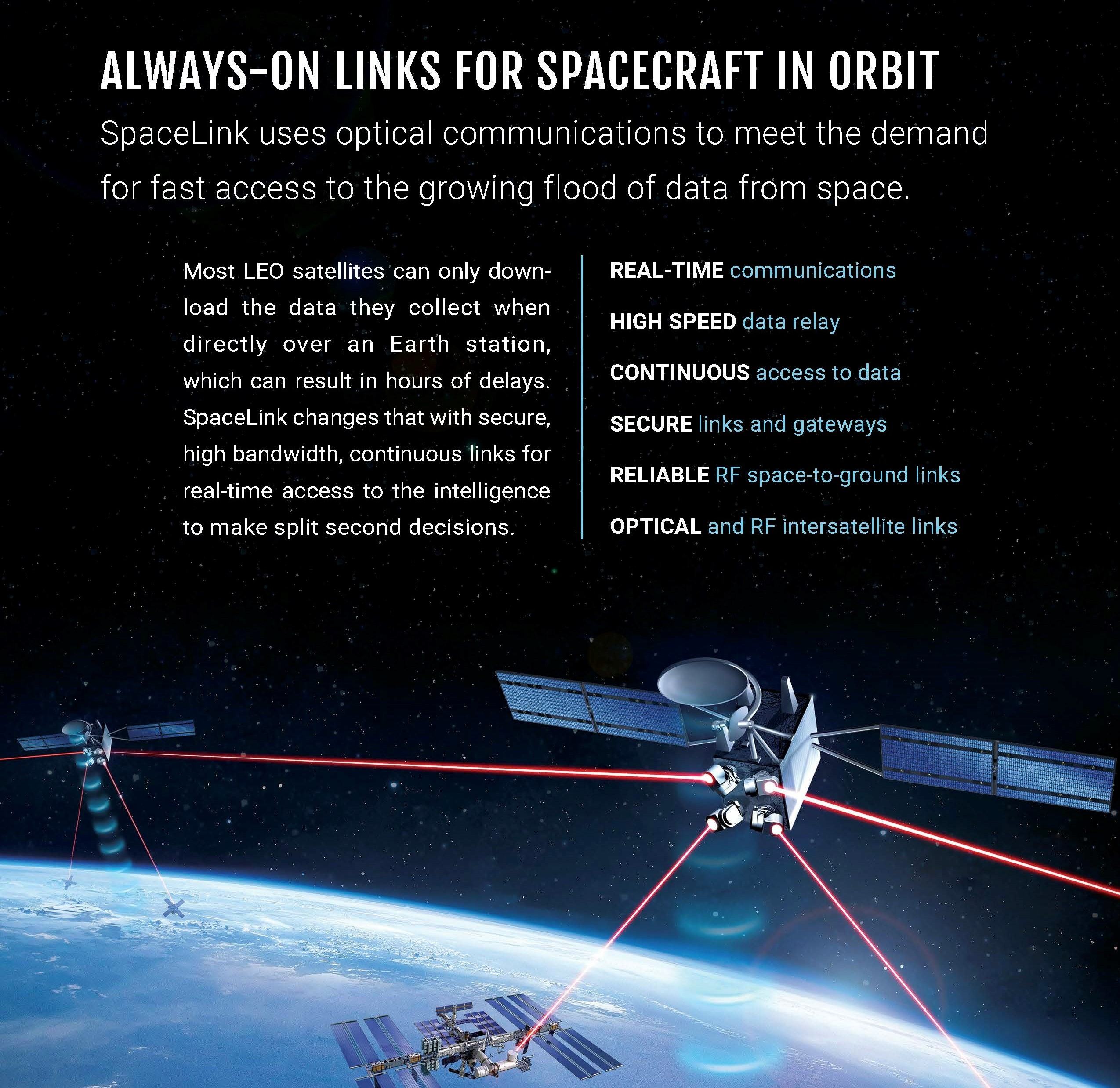Real-Time Relay of Remote Sensing Data
If you missed us at the Small Satellite Conference at Utah State University or want to follow up on what you saw there, here is some information on real-time relay of remote sensing data for download or review.
If you missed us at the Small Satellite Conference at Utah State University or want to follow up to learn more about real-time relay of remote sensing data:
- You can view our video from the ice cream social here
- Download our brochure here
- Review detail on how SpaceLink provides “Real-time Relay of Small Satellite Remote Sensing Data to Tactical Military Operators” in our poster.

Real-time Relay of Small Satellite Remote Sensing Data to Tactical Military Operators
A Medium Earth Orbit (MEO) constellation of high bandwidth optical and RF relay satellites is urgently needed. This type of relay system can provide alternative space communications pathways that ensure resiliency and reduce sensor-to-shooter latency. It can provide real-time continuous tasking uplink and data downlink from the growing constellations of commercial remote sensing satellites. Tactical military operators need to establish communications links to these commercial assets, from commercial CONUS ground stations or directly to deployed ground terminals, when and where they need them. This level of access adds significant risk mitigation against adversary threats to foreign ground stations and data processing nodes in combat. It makes the concept of a hybrid architecture combining government satellites and commercial satellites a reality.
Today’s remote sensing satellites in LEO can only download data or upload tasking commands when over a ground station. Typically, this is limited to just six percent of a satellite’s time on orbit. Combined with limited data throughput and gaps of as much as eight hours between passes, the real-time intelligence needed to make tactical decisions is rarely available. This is coupled with limitations of location and where the ground station site can be established.
Satellite Relay from MEO
A constellation of relay satellites in MEO can transform the value of the data collected, providing continuous link availability. With optical inter-satellite communications between satellites and high bandwidth V/Q-band communications to the ground, gigabit per second throughput of real-time data is possible. SpaceLink has designed an innovative system architecture, implementing services that provide high security and 100 percent access time so that data is available in seconds when it matters the most.
The SpaceLink satellite relay constellation consists of four MEO Optical/RF relay satellites equally spaced in an equatorial orbit. Scheduled to launch in 2024, its key features include: 1) 100 percent line-of-sight access to Low Earth Orbit (LEO) satellites, eliminating delays between the collection of commercial remote sensing data and the delivery of the data to the end user; 2) customer-driven real-time tasking and direct downlink of mission critical data; 3) an option for on-board processing to support real-time, same orbit tip-and-cue between multiple and diverse remote sensing satellites (e.g., RF to SAR to EO visible); and 4) an ability to augment proliferated LEO communications satellites providing a resilient ‘fail-over’ capability for government communications paths during periods of either pre-planned, or adversary-caused loss of communications.
The Speed of Relevance
SpaceLink will deliver remote sensing data to the tactical edge at the speed of relevance. The relay system is designed to meet the growing demand for a communications superhighway for the space economy with highly secure, continuous connectivity when seconds matter.